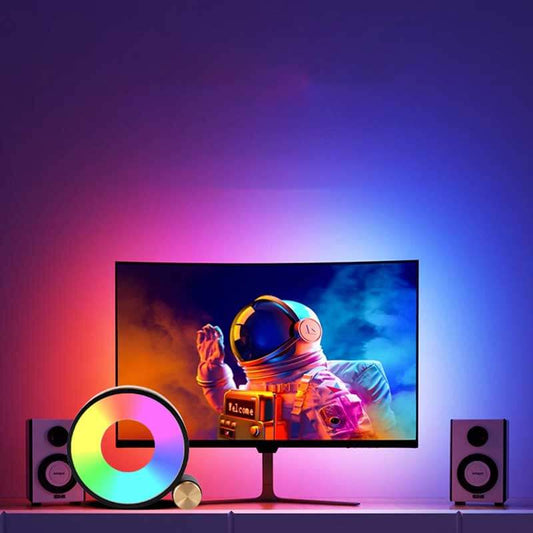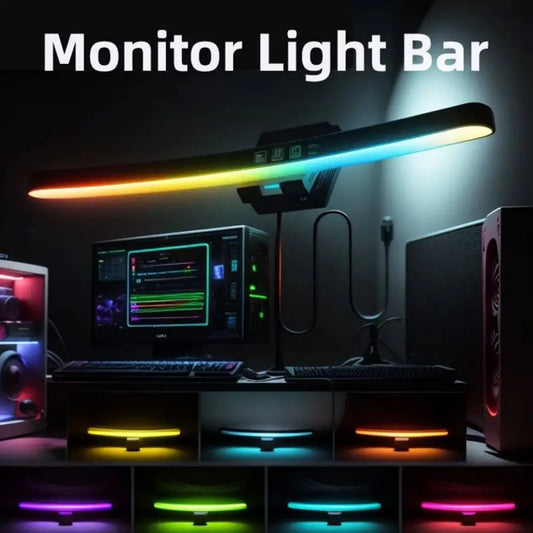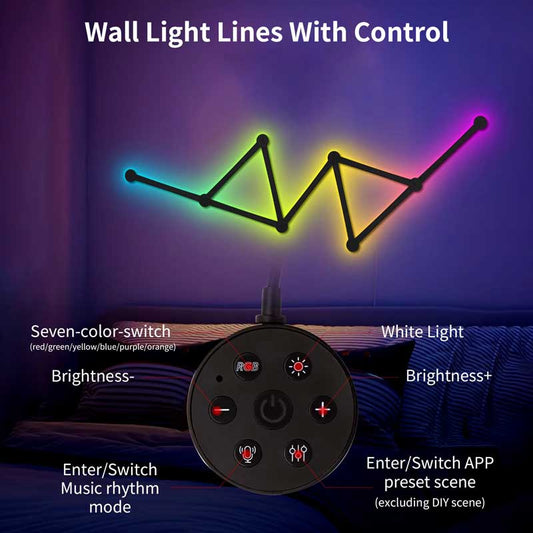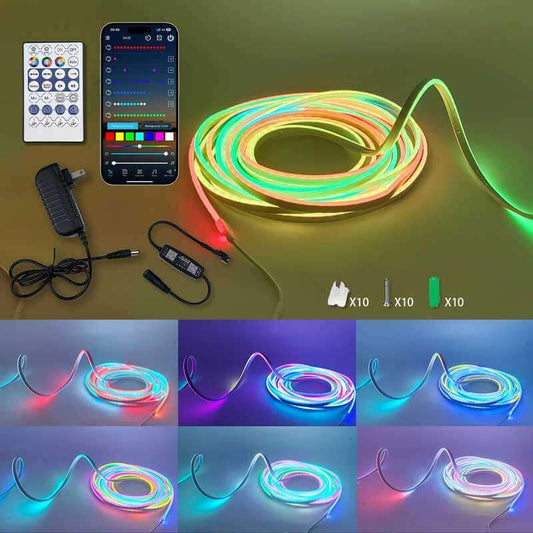Can I connect Spotify to my LED lights?
Partager
Yes, you can connect Spotify to your LED lights, and it’s a fantastic way to enhance your music experience by synchronizing your lights to the beat of your favorite songs. Whether you’re listening to a playlist, enjoying a podcast, or playing your favorite tunes, syncing your LED lights with Spotify adds an extra dimension to your home entertainment setup.
Here’s everything you need to know about how to connect Spotify to your LED lights, where to buy the right products, and more.
How Do I Connect Spotify to My LED Lights?
To sync Spotify with your LED lights, you’ll need to use smart lights that have the ability to react to sound, specifically those with a music sync feature. Many modern smart LED strips and bulbs come with apps that allow you to sync your lights to any music source, including Spotify.
There are two main ways to do this:
1. Using Built-In Music Sync Features on Your Smart Lights
Some smart lighting brands, like Govee, Philips Hue, and Nanoleaf, allow you to connect their lights directly to music apps like Spotify via their dedicated apps. Here’s how to do it:
- Download the App: For example, if you have Govee lights, you’d download the Govee Home app from the Google Play Store or Apple App Store.
- Connect Your Lights: Follow the app’s instructions to connect your smart lights to the app and sync them with your Wi-Fi.
- Enable Music Mode: Once your lights are connected, you can switch the lights into Music Mode or Sync to Music mode. This will enable the lights to change colors and pulse to the beats of whatever music is playing.
- Play Music from Spotify: You can either play music directly from Spotify or use your phone’s microphone to pick up the sound in the room. If you’re using a Bluetooth speaker or other audio devices, they should be able to send the music to the light sync system.
- Enjoy the Light Show: As you play music through Spotify, your LED lights will respond to the beats, adjusting their colors and flashing in time with the music.
2. Using Third-Party Software for Desktop or PC
If you prefer to use Spotify on your computer or desktop and want to sync the lights to that music, some smart lighting apps, like iLightShow or Hue Sync, allow you to sync your lights to the music on your PC:
- Install Software: Download apps like iLightShow (for Hue) or Hue Sync.
- Connect Your Lights: Make sure your smart lights are connected and set up in the software.
- Sync to Spotify: Open Spotify on your desktop, play your favorite music, and the software will sync the lights in real-time.
3. Using Voice Assistants
For smart lights that work with Alexa or Google Assistant, you can use voice commands to sync your music to the lights. You would connect Spotify to your voice assistant, and once you play music, your lights will adjust accordingly. However, this may require more advanced light setups and integrations with specific devices.
Where to Buy LED Lights That Sync to Spotify?
If you’re ready to get your hands on some LED lights that sync with Spotify, here are some great options to check out:
-
Govee RGBIC LED Strip Lights – A popular option that can sync with your music, including Spotify, through the Govee Home app.
-
Nanoleaf Shapes and Panels – These customizable panels can sync to music, including Spotify, for a visually stunning light show.
-
Philips Hue Light Strips – A high-quality and popular choice for syncing lights with music.
-
LIFX Smart LED Bulbs – These bulbs also support music syncing through various apps.
Product Reviews
-
Govee RGBIC LED Strips:
These are one of the most affordable and versatile options for music-syncing LED strips. Users love the Govee Home app and how it allows for easy customization. The lights are very bright and responsive to music, with smooth transitions and vibrant colors.- Pros: Affordable, easy setup, music sync feature, vibrant colors.
- Cons: Some users report that the app can occasionally lag or disconnect.
- Review Rating: ⭐⭐⭐⭐☆ (4/5)
-
Nanoleaf Shapes:
Nanoleaf’s panels are a high-end, customizable lighting solution with a sleek design. They sync perfectly to music and can create a completely immersive experience. Ideal for gamers and home theaters, but they’re a bit pricier.- Pros: Stunning design, great music sync, customizable shapes.
- Cons: Expensive.
- Review Rating: ⭐⭐⭐⭐⭐ (5/5)
-
Philips Hue Light Strips:
Philips Hue is one of the leaders in smart lighting. Their light strips can sync with Spotify and provide seamless integration with smart home systems. The Hue Sync app is well-loved for creating a personalized music-synced lighting experience.- Pros: High quality, reliable, great music syncing.
- Cons: Pricey, requires a Hue Bridge for full functionality.
- Review Rating: ⭐⭐⭐⭐⭐ (5/5)
YouTube Channels for Learning More
If you want to see music-syncing LED lights in action, check out these YouTube channels that offer detailed reviews and tutorials:
- Govee Official Channel – Govee’s official YouTube channel provides step-by-step guides on syncing their lights with music and other cool lighting features.
- Nanoleaf – Nanoleaf’s channel offers great tips and creative ways to use their lights, including music syncing.
- Smart Home Sounds – This channel covers various smart lighting solutions and reviews, including music-syncing features.
- Philips Hue – Philips’ official channel features a lot of content on their smart lights and sync options.
Conclusion: Is It Worth It?
If you're someone who loves immersive music experiences, syncing your LED lights to Spotify is definitely worth it. The lights will elevate any activity, from gaming and movie nights to parties and relaxed evenings at home. Plus, it’s fun to see your lights change in real time with the music you love.
With the right LED lights, apps, and setups, you can create a truly unique and personalized environment that reacts to your music. So, why wait? Grab some smart lights, sync them with your favorite Spotify playlist, and watch your space come alive!




